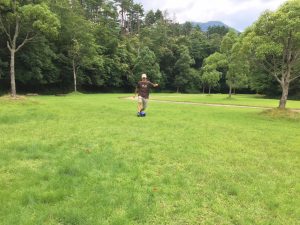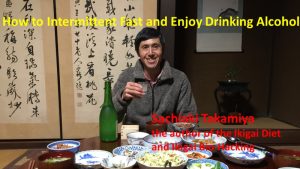Diet vs. Exercises: Which One is the Japanese Secret to Longevity?
https://ikigaidiet.com/webinars/
Get the Japanese Superfood List
Japan is known for longevity but apparently, Japan has the highest number of super centenarians per capita, according to this video.
Yes, you guessed it right, I have been watching a lot of videos recently-haha.
I wasn’t entirely wrong in stating Japan is one of the healthiest countries in the world in my book The Ikigai Diet, after all.
I did still say it was one of.
Anyway, whether it is the longest living or one of the longest living, learning the Japanese secret is beneficial for anyone interested in longevity.
There are many factors in the Japanese secrets, but today, I would like to find one best factor why Japanese people live long. Especially, I would like to compare diet and exercise since those two factors seem to affect our health the most.
By the way, I am not going to present you the fact with scientific data, this is purely based on my observation as a person living in Japan. It is completely anecdotal.
So, which plays a bigger role in Japanese health, a diet or exercise?
Although the above video says Japanese people do a lot of walking, Japan isn’t a sports nation. Fitness in general isn’t big in Japan compared to countries like the United States. Americans do sports a lot more than we do. That is the impression I get and I think that is the impression many Japanese people get.
This is because many of the fitness trends in Japan came from the United States. Gym culture, for example, you know working out at a gym, came into Japan from the United States in the 1980s. Before that, we didn’t have universal gym machines and athletes were doing bodyweight training. I remember my friend who went to high school in The U.S. and played baseball there telling me how American high school baseball was different from that of Japan. They had access to universal gym machines in their school and strength training was on their training menu. While in Japan, we were mostly doing running, push-ups, sit-ups, and squats all in the school ground.
Jogging was brought from the United States, too, in the 70s when President Carter visited Japan. The Japanese media featured Jimmy Carter jogging and introduced it as a new American fitness trend. Many people began jogging after that and it became a big boom.
Even when gym culture was introduced to Japan in the 80s, not many Japanese people went to the gym. Around that time, I knew many Americans in Tokyo, and about three out of ten people I knew worked out regularly, but one out of twenty Japanese people I knew worked out. That was my impression. I went to several different gyms and I always saw a few foreigners there while I didn’t see any when I went to other classes or social events. Japanese people were engaged in sporting activities such as playing baseball, soccer, tennis, or swimming, but it was less common to just exercise.
It is probably different now, but we are talking about the past habit when we talk about centenarians, and during their youth, I bet they even exercised less.
The bottom line is that Americans work out a lot more than the Japanese do and if exercise is the key to longevity, Americans should be longer living than the Japanese.
As far as walking is concerned, we do walk quite a bit since we have not been an automobile society as much as America. If you live in big cities such as Tokyo, Yokohama, and Osaka, you commute to work by public transportation and you end up walking up and down the stairs at train stations. In the countryside where many of the centenarians live, people drive everywhere now, but I suppose when they were younger they walked more.
Therefore, I should say walking along with gardening is still a major factor in their longevity. Especially in Nagano, the longest living prefecture today, people walk ups and downs the hills to get their vegetable gardens.
Yet, if I have to choose between diet and exercise, I will pick diet to be the winner.
That is one big difference between Americans and the Japanese, too.
Yes, if there is one key factor in our longevity regardless of geographic locations within Japan, it is Washoku, the Japanese diet. Often Okinawan diet is featured to be a healthy diet, but it is pretty much the same as Washoku.
Washoku is a high fiber diet with a lot of vegetables, grains, and some beans. We eat a lot of fermented foods such as miso, natto, and pickles, too, and fermented foods are considered to support our gut microbiome along with fiber. We eat more fish than meat, at least, when the centenarians lived, and we eat a lot of seaweeds. Both fish and seaweeds are great sources of omega-3 fatty acids.
Today, we eat more meat but the amount is much smaller compared to that of the Standard American Diet. We call those meat dishes Yoshoku, which means Western food, but they were uniquely developed in Japan, still retaining many of the Washoku elements.
I discussed the difference between Washoku and Yoshoku in detail in The Ikigai Diet: The Secret Japanese Diet to Health and Longevity, along with the difference between the diet of the city dwellers and the country dwellers, and the difference between the diet of young people and old people.
We don’t eat steak for instance. We eat thinly sliced meat, and the amount is much less. We also eat it with vegetables, pickles, miso soup, and rice because of our tradition of Ichiju Sansai, one soup three dishes. Miso soup usually contains Wakame seaweed, so we have a lot of fiber, fermented food, and seaweed in each meal even if it is a meat dish. Therefore, those meat dishes are quite different from a hamburger with French fries, or steak with potatoes, carrots, and peas.
The older you get, you have a tendency to eat more Washoku than Yoshoku, therefore many of the centenarians spent most of their life on a Washoku diet.
By the way, there is a famous baseball comic book story called Dokaben, and there is a character called Iwaki, who is a 6 foot 5 tall guy with mighty power. There is an episode where he eats the whole sardine every day. He grabbed the tail of a grilled sardine and eat it from the head all the way to the tail.
Dokaben was popular when I was in elementary school, meaning early 70s, and it shows the diet of average Japanese people back then.

